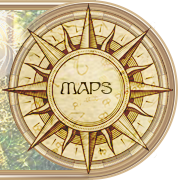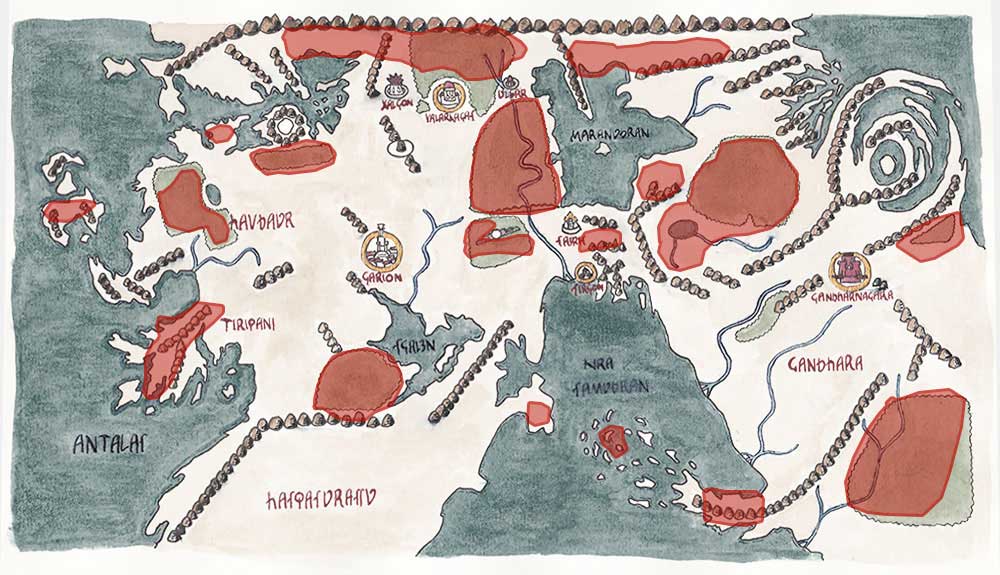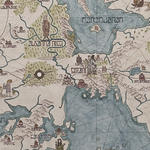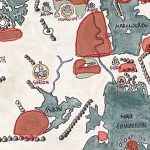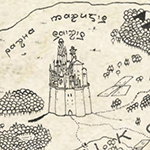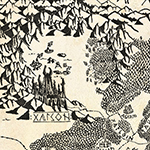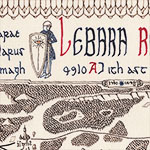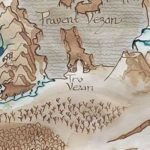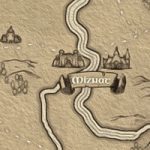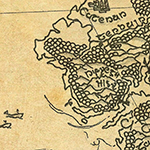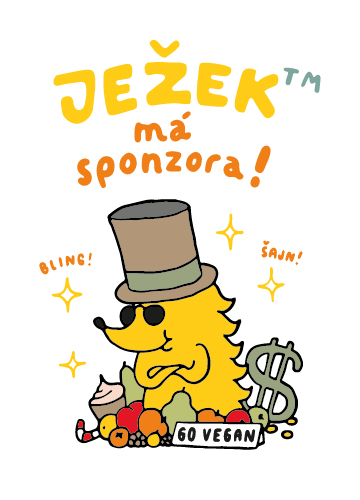The Grand is a world of many varied races and nations, and on this page you will find only a very brief overview of the major races and their distribution indicated on the map with links to detailed descriptions of individual races and nations. First of all, all races and nations are rather idealized types between which there are smooth transitions. Although Grand is not as globalized as our world, so countries are culturally and racially more homogeneous, on the other hand large cities are usually a place of great mixing, and most nations have a long evolution full of conquest, defeats and connections with other nations.
In order to have at least some order, historians and ethnographers in Sirgon have introduced a two-tier system of races and nations – individual races are divided into smaller nations. Nations usually have an awareness of their collective identity and hold together, while races are more of a scholarly concept that helps explain the physical similarities between different nations, but do not play the role of shared identity (for example, Sirians feel Sirians and are related to some distant nations, they are not very interested). There are exceptions where race as a source of identity (and hostility) suddenly begins to play a role, which has been the case in some of the so-called racial wars in the past, and the Elves suffered above all.
Scholars recognize a total of six humanoid races (Azharians, Nivi, Dorn, Vezanci, Arkin and Elves), seven semihumanoid races (Saif, Falask, Ygg, Genie, Arboreal, Celestial and Antipodes) and a vague number of non-humanoid, Ofité and others). All of these are divided into individual nations and nations into tribes and families.

Humanoid races
Races that have a completely human physical form and differ only minimally on the physical plane – color of skin, hair, eyes, beard growth, eyebrows, earlobes, fullness of lips and the like. Larger differences already exist at the level of talent, magic power and ‘essence’ – some humanoid races have a great magical talent of a specific kind, do not age, others do not need sleep, others have a collective consciousness and so on.
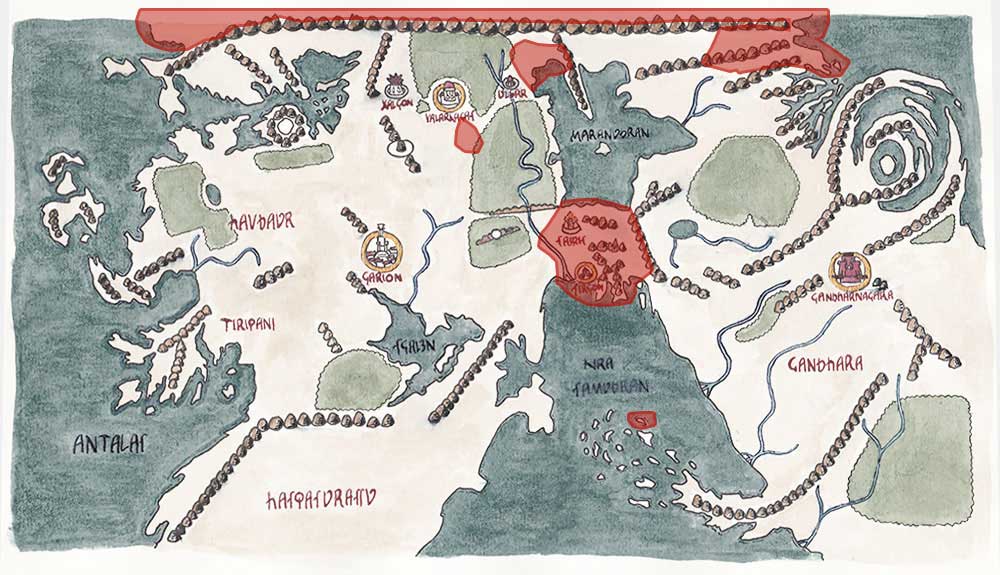
Niviis
It comes from far north behind Kaal Charmat. Among the Nivian nations are the northern Chirbets, Sirians, Adamans, and Lorins. Nivias, even those living south (in Sirania), have very fair skin. They are smaller slender figures. The northern Nivi, and occasionally the Sirians, have slightly slanted eyes. Hair and beard are almost always black or dark brown, eyes of different colors. A peculiarity of the Nivians is the absence of height difference between men and women.
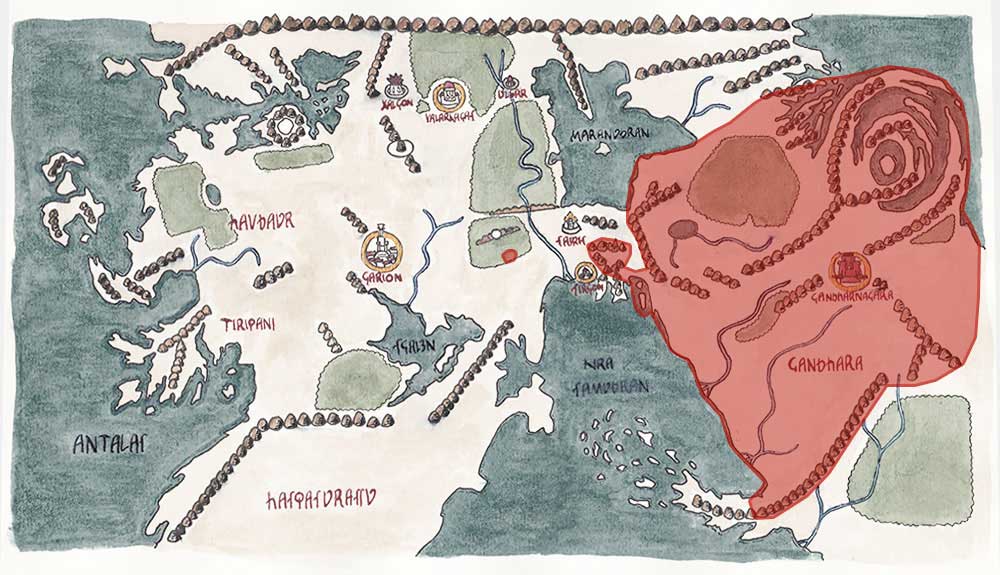
Azharians
Originally a race of light beings of immense power, for whom bodies are merely garments, which they can lay down at any time and create new ones. A major weakness of the Azharians is the decline of their power across generations. Only the original Descendants retain full power and their bodies do not know the changes. Over time, the original Azharians have evolved into several deadly races, of which the most numerous and well-known are the mysterious Gandharis. Among the other Azharian peoples are naked Archaics and investigating Mantrins.
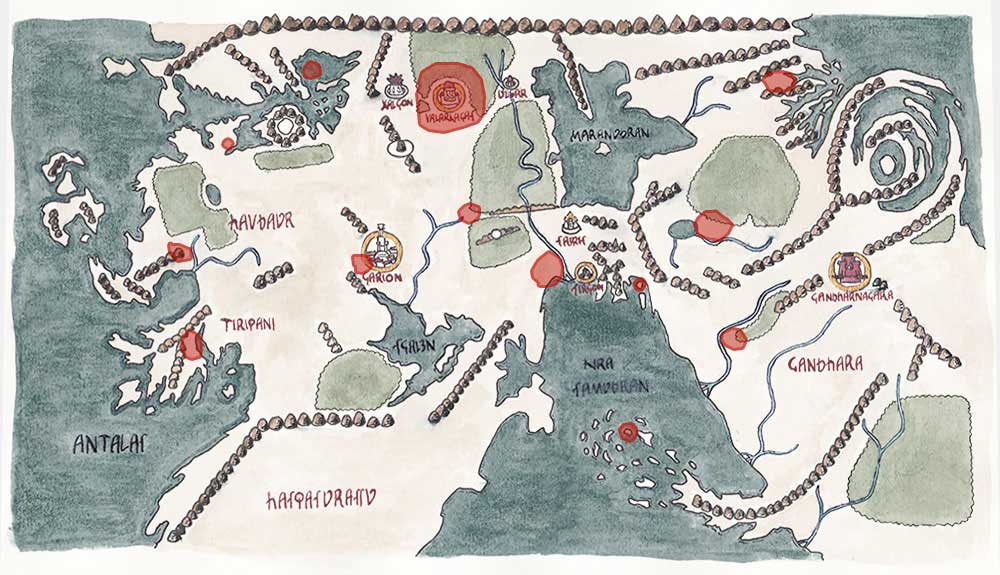
Arkins
A race firmly associated with the worship of the sacred flame of Auran / Aderan. In their bones, blood and soul, the flame is written in the form of fiery runes. The Arkins are relatively uniform in appearance and characteristics across individual nations, which, moreover, arose as colonies of the original Valarkagant, the only difference lies in the different dialects of individual Ark, but still remain mutually understandable. A special feature of the Arkin is the reduced need for sleep.
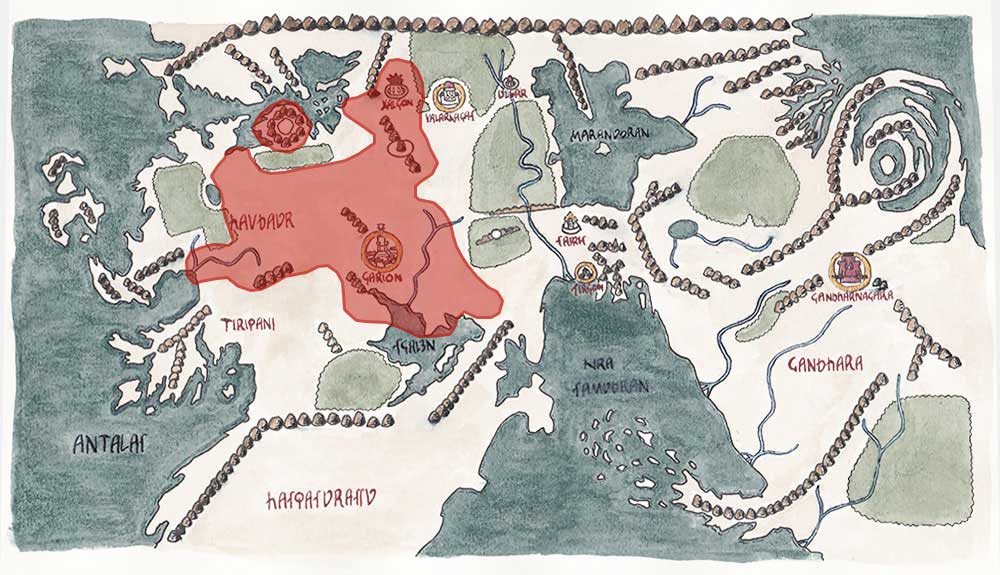
Vezans
Created by Baoth of clay and their soul as well as magical power is hidden in their blood. Common characteristics of the Prisoners are the dark skin (“the color of the clay they were made from”), black hair and eyes, otherwise average human height and life expectancy. They have a very lively and creative mind, are active and enterprising. Some of the most famous inventors and innovators come from the Vazan race, as well as statesmen and orators. Agile language and skillful argumentation, persuasiveness of speech and charisma are inherent in many Prisoners.
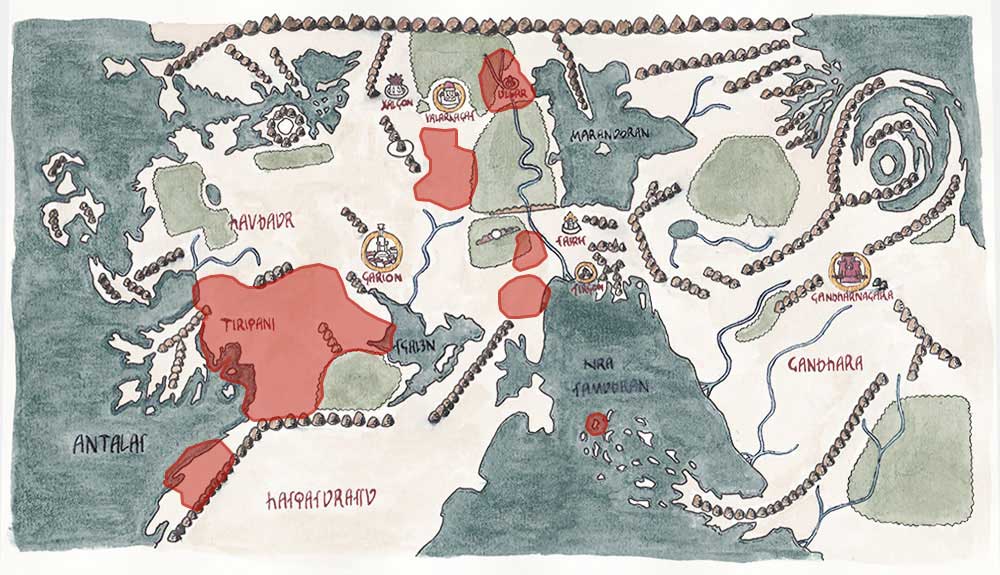
Dorns
A robust and resilient population of the West and North. The Dorns as a race entered the historical scene quite recently, when wild Dorian tribes from the Tiriqan steppes swept the Western Grand, temporarily conquered Garion and settled in a number of Nordic countries. Since then, however, have settled and established, especially north of Garion, several kingdoms. Dorns are generally more robust and have heavier bones than average people, their shoulders and hips are wider, arms and legs stronger and stronger.
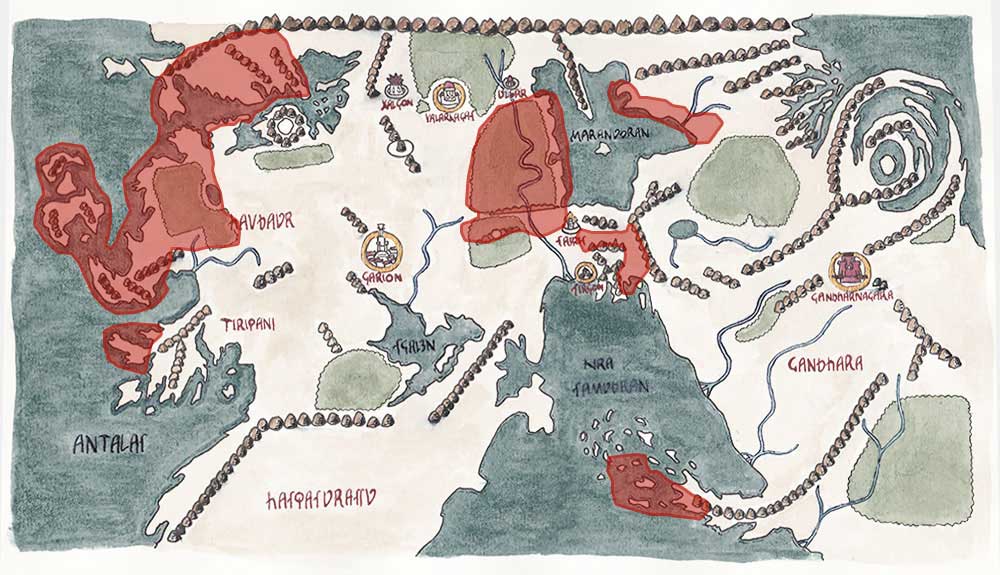
Elves
An ancient race that is said to have originated with the world itself. Unlike most other races, elves are extremely long-lived, calmer in nature and milder. They live in ties with the forces of nature, and unlike others, they change little their habits and nature during their lives. Like forest animals, they live in instinctive harmony with their surroundings and possess a kind of wisdom, a wisdom of balance and non-interference that is largely inaccessible to other races.

Semihumanoid races
This not-so-good name refers to races that, although generally human in shape, differ from humanoid races by some distinctive bodily feature, body part, organ, or ability that is perceived as non-human. For example, the Saifs have some water bellows instead of their hair, the Dryades and the Arboreal have tails and fur, the Falaskis have gills, and the Genie can thin and thicken. As always, no category is quite accurate, as many dryad nations look quite human, have no tails or hair, yet have fallen genetically among semihumanoids.
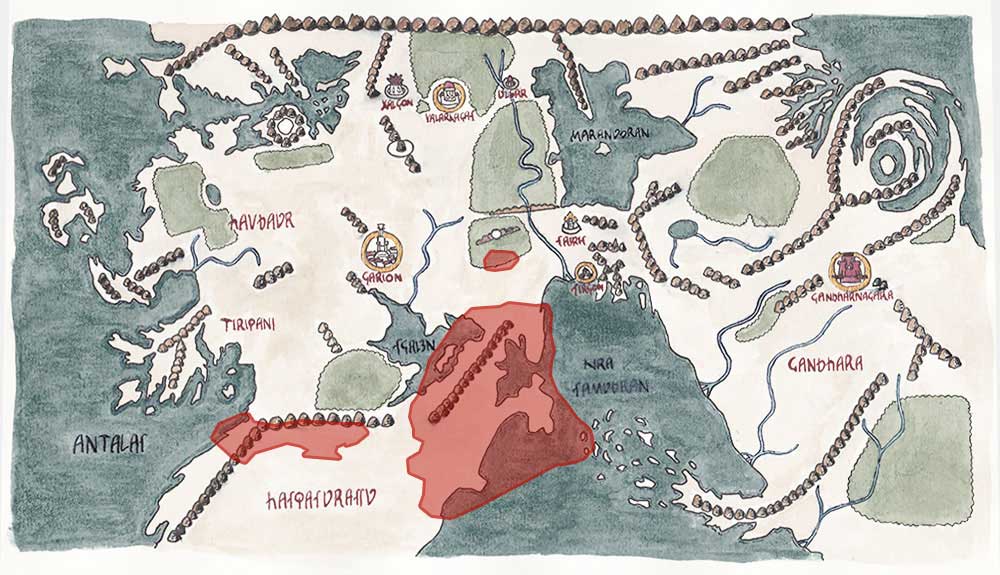
Saives
They are basically similar to humans, with two main differences, firstly their skin is yellow-gold in color and is very stiff and durable without losing the impression of smoothness. Only when touched can it be felt that it lacks moisture and does not have the flexibility of human skin. They have some dreads on their heads, which are actually water bellows, allowing them to survive in the desert. In the far south they established a number of rich kingdoms between the sea and the Hasqasurassa desert.
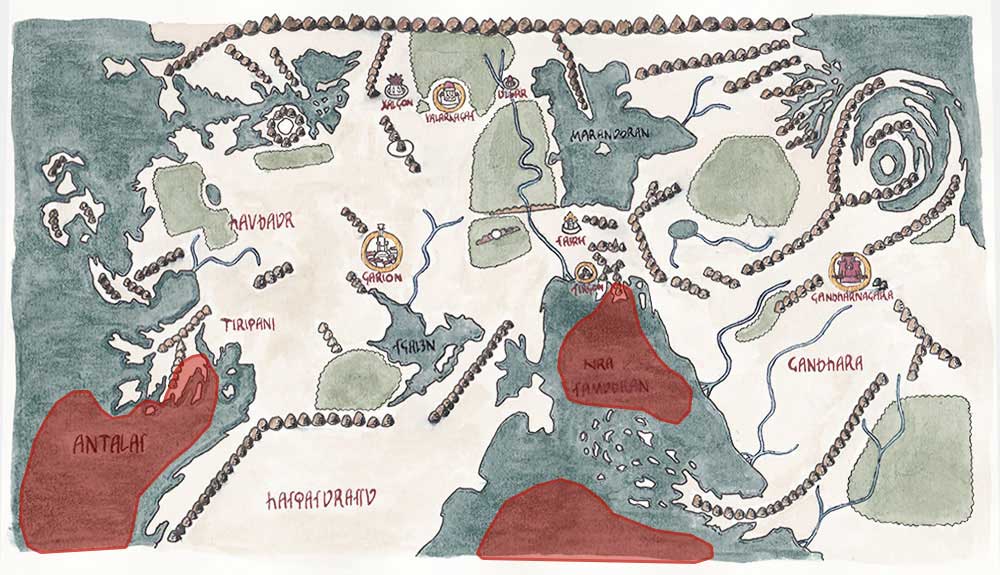
Falasks
The main distinguishing feature of the Falaskis is that they have gills in addition to their lungs. They are taller than the average people, the Falask women are even taller. Legs wide, with membranes between toes and bodies elongated, lithe, especially underwater. The color of the skin varies from gray to green to almost black. Their hair has a different character than the hair of earthly races, they are rather long semitransparent ropes that can shine with internal light, which is especially useful in the underwater depths.
Yggs
The race, which has its origin and origin in the Forest Hall, in the true Heart of the Forest and from there has spread not only to the Grand, but to all the worlds where there are forests. The different Ygg nations vary greatly in appearance and way of life, yet they share the same essence and perceive each other as fraternal creatures. Yggy includes Asks, tree creatures, Dryads, tree guards, Nordic grassland Auduns, and gloomy giant Trolls who have not seen people’s eyes.
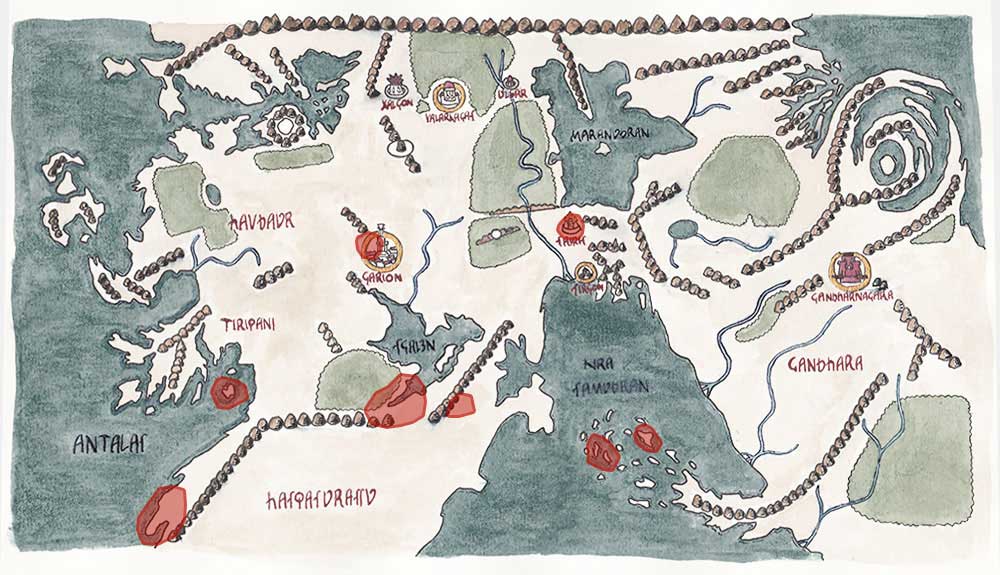
Djinns
Djinns are a separate tree of life, so there are plants and animals with the same characteristics – their common feature is that they feed on manna. They can float, densify and thin, and are invisible to the human eye in sparse form. The djinn kingdom lies in the southern regions and their settlements are often suspended by magic or balloons in the air. The djinns are close to magic, so we can find them in such famous places of magic as the city of Sairis.
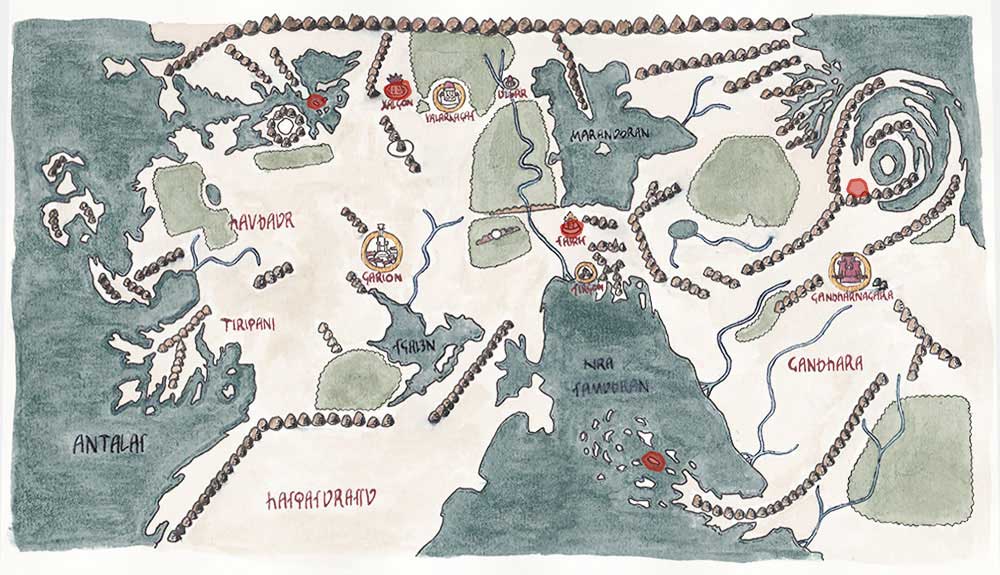
Celestials
The noble and powerful race, which usually inhabits other worlds, and is only rarely found on the Grand. Occasionally, the celestial can be found in Sairis, Xalgon, or another of the centers of magic, where portals to other dimensions occur. The upper limbs always have four, be it four hands or a pair of hands and wings. Their skin is dark turquoise, their hair, teeth, nails and irises are shimmering silvery. If they have wings, they are covered with silver feathers.
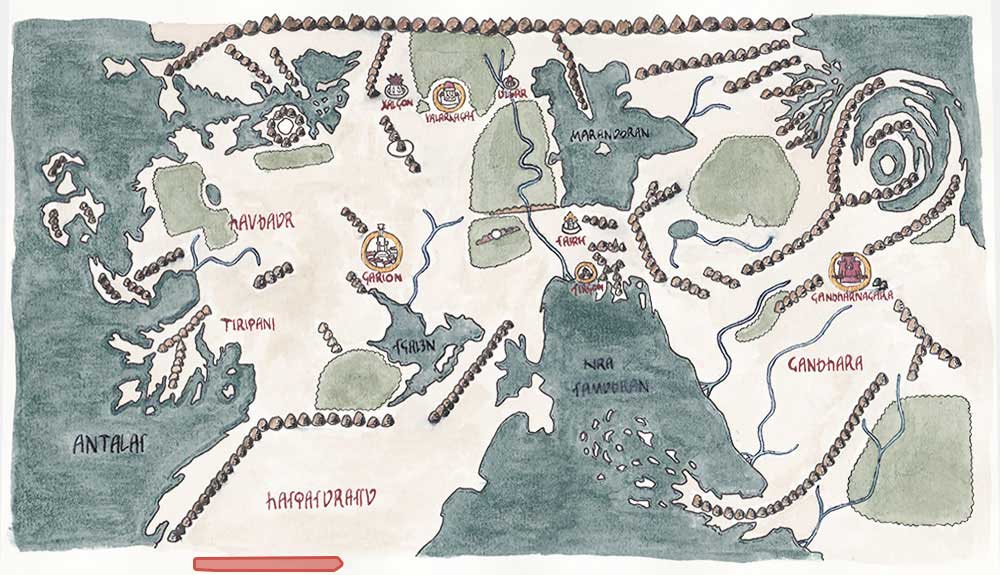
Arboreals
A race inhabiting the far forests beyond the Hasqasurassa desert. They have understanding legs with opposite thumbs and a long understanding tail. Their body is covered with delicate short fluff, similar to the fur of animal chicks, and their hair never grows longer than about one foot. They are perfectly equipped to live on the high floors of the rainforest, and are far removed from other races by their thinking and speaking primarily a sign language.
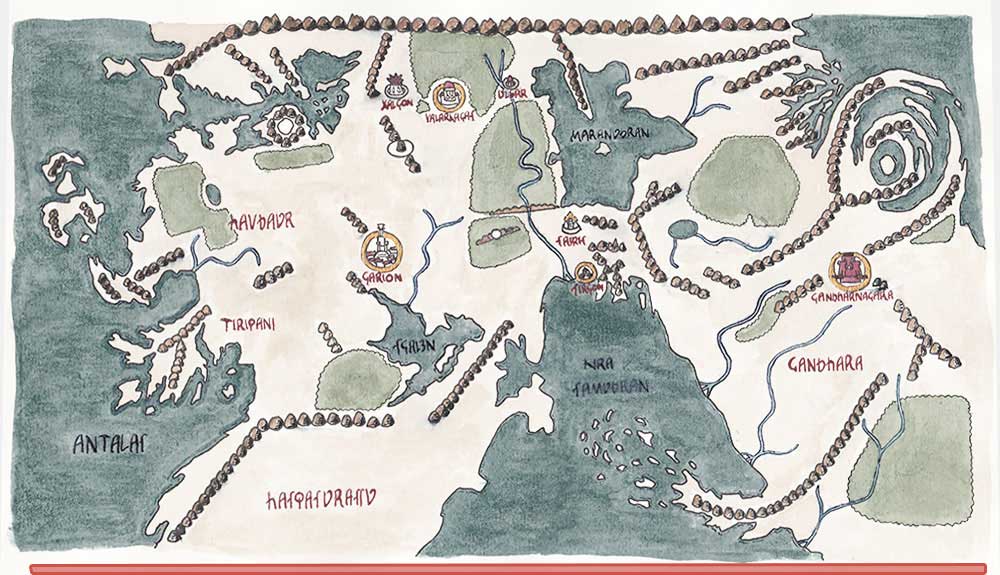
Antipodes
Of the few that are still remembered about the Antipodes, the following can be mentioned: Antipodes are a race based on symbiosis with fungi. Just as the continents of the known world are covered with forests and meadows, the continents of the Antipodes in the far South are covered with an enormous forest of mushrooms. Antipodes live in protected cities and only initiates can leave cities and go beyond their borders. The physical form of the Antipodes is unknown, although some representations can be found in the manuscripts of the North libraries, but most of it seems to be barren fantasies.

Non-humanoid races
Among them are those creatures who show intelligence and communicate in a language that is as complex as the languages of the aforementioned races, but their bodies are unlike human. Very often, even the way of thinking of these beings is not very similar to human, but it overlaps enough to make basic communication possible with a little effort and language learning. This includes the Gryphs, the giant winged predators, who have been cooperating to varying degrees and communicating with Elves and Yggy for ages. This includes dragons and demons and deep-sea ammonites of a creature called the Salasites and a snake nation called the Ophites and many others.
